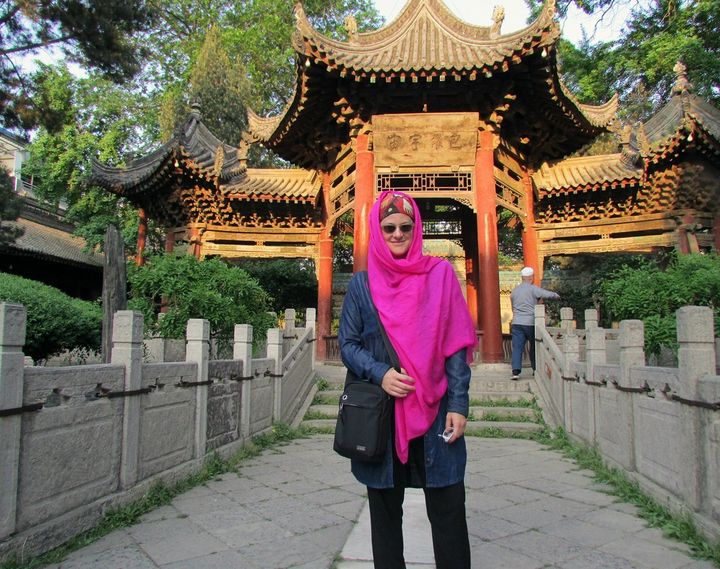
For years I had been dreaming of visiting the Great Mosque of Xi'an in China, ever since my Brown University professor John Emigh showed me his photographs and urged me to go see it for myself. This spring, I finally had the chance to see this unique mosque with my own eyes. Since I arrived from the airport to my hotel around 4 pm, I knew that I had a small window of time to navigate the crowded streets of Xi'an and reach the mosque by sunset. This would be my only opportunity to visit this historic mosque -- an active place of worship -- as I would be setting off the next morning to explore the mosques, minarets, and shrines of Xinjiang.
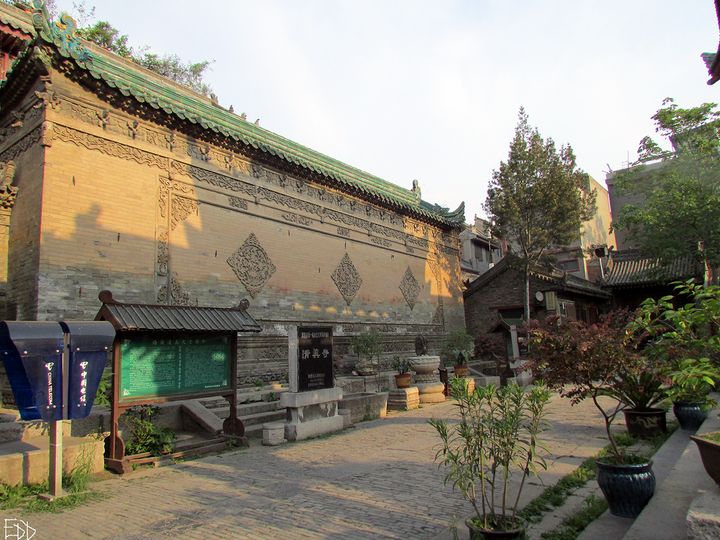
After I zipped past the Drum Tower and emerged from the narrow alleys of the Muslim quarter into the mosque's first courtyard, I understood immediately why my professor -- and a friendly, young Hui Muslim woman on the plane -- had told me that the mosque was a site not to be missed. The first thing I noticed was the classic Chinese temple feature of a spirit screen wall, designed to keep demons away. Opposite this Ming Dynasty wall I spotted some fierce dragons carved in stone.
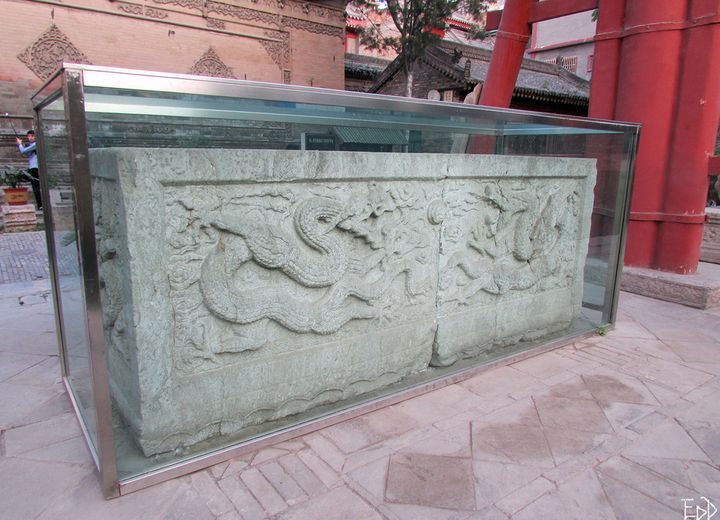
The entire mosque complex is a brilliant blend of Islamic and Chinese architecture. One of the stone tablets inside the mosque says that it was constructed in 742 during the Tang Dynasty (618-907) -- though much of what you see today is from the Ming and Qing Dynasties. Above the dragons in the first courtyard is a 17th century ornate wooden arch standing 9 meters tall and covered with glazed tiles.
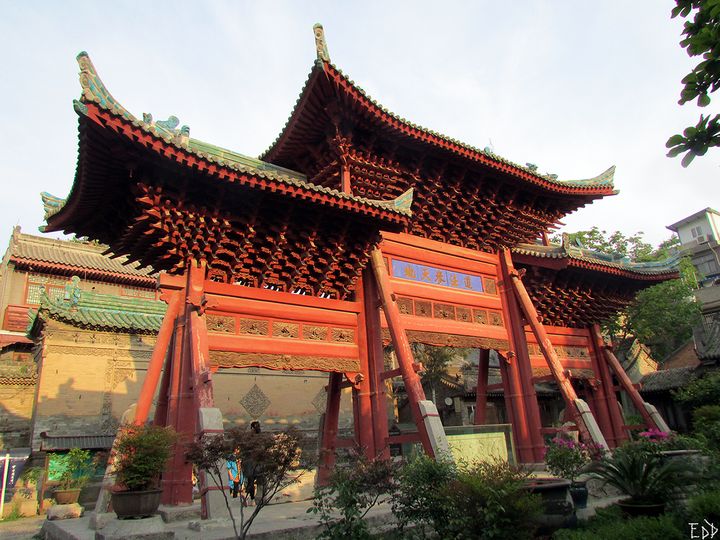
The full mosque complex -- with four courtyards in total -- occupies an area of 12,000 meters. The well-manicured gardens -- filled with everything from standing rocks to white and pink magnolias -- contribute to the mosque's tranquil atmosphere. Even the names of the courtyards and towers themselves inspire peaceful contemplation: Qing Xiu Dian ("Place of Meditation"), Xing Xin Ting ("Pavilion for Introspection"), and Sheng Xin Lou ("Tower of the Visiting Heart").
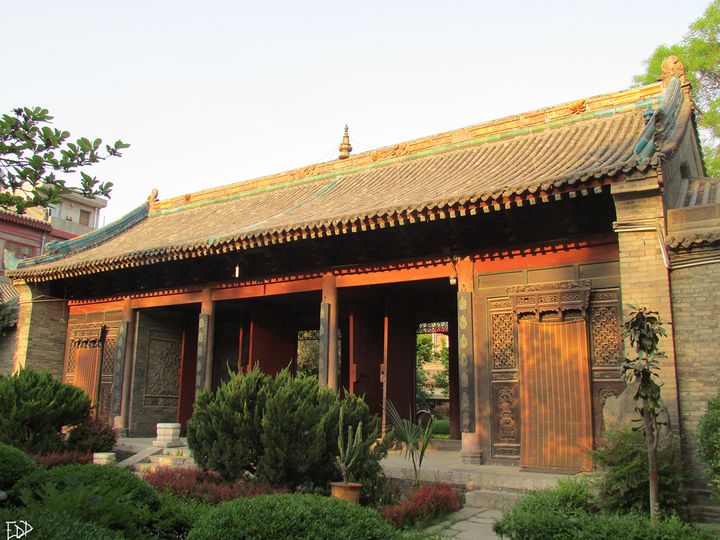
When I was teaching a seminar at Columbia University on Sufism in Central Asia, my students were surprised to learn about the long history of Islam and Sufism in China. In fact, the four main books on Islam which were translated into Chinese before the 20th century were all translations of celebrated Persian Sufi texts. While recently studying Mandarin in Beirut, I delved deeper into researching Islamic Neo-Confucianism in China through texts like "Great Learning of the Pure and Real" and "Displaying the Concealment of the Real Realm" -- which blend together Confucian social teachings, Neo-Confucian metaphysics, Buddhism, and Taoism with Islamic thought.
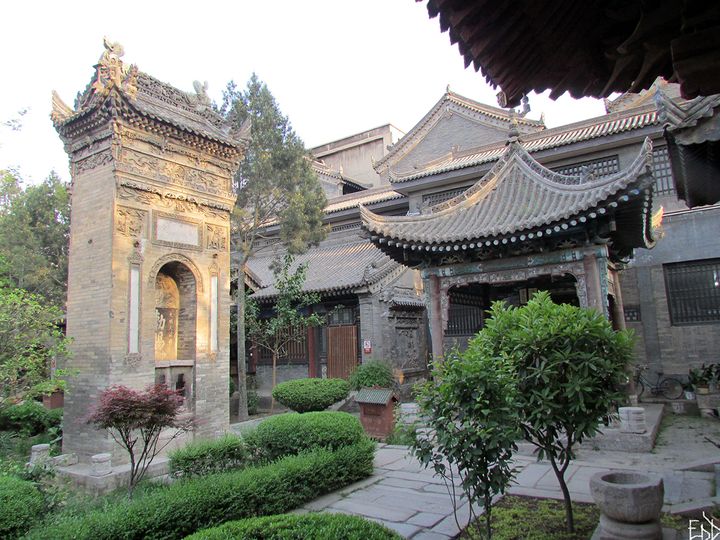
In addition to its architectural magnificence, the Great Mosque of Xi'an has calligraphic and textual gems as well. The second courtyard features two towering stelae carved with striking and sophisticated Chinese calligraphy. One stela features the work of a renowned Song Dynasty calligrapher named Mi Fu, while the other showcases the calligraphy of Dong Qichang of the Ming Dynasty. Near the third courtyard stands Chixiu Hall, a prayer hall from the southern Song Dynasty, with Islamic stelae in multiple languages -- perfect for practicing my Arabic, Persian, and Chinese.

As I prepared to dust off my Persian and decipher some stelae, I thought back to a book I had read called Chinese Gleams of Sufi Light, a compilation of Chinese Sufi texts with gems like this: "Asserting unity [tawhid] is to make the heart one. In other words, it is to deliver and disengage it from attachment to what is other than the Real, both from the side of seeking and desire, and from the direction of knowledge and gnosis. In other words, seeking and desire are to be cut off from all objects of seeking and desire, and all objects of knowledge and intellect are to be eliminated from its insight's gaze. It turns its attentiveness away from every face, and no consciousness or awareness of other than the Real remains."

The mosque even has engraved stelae mounted on the backs of antediluvian bixi -- mythical tortoise-like creatures usually found in Confucian temples. As you can imagine, they are especially popular with foreign tourists. Apart from being adorable, they're not exactly what one expects to see when visiting a mosque.
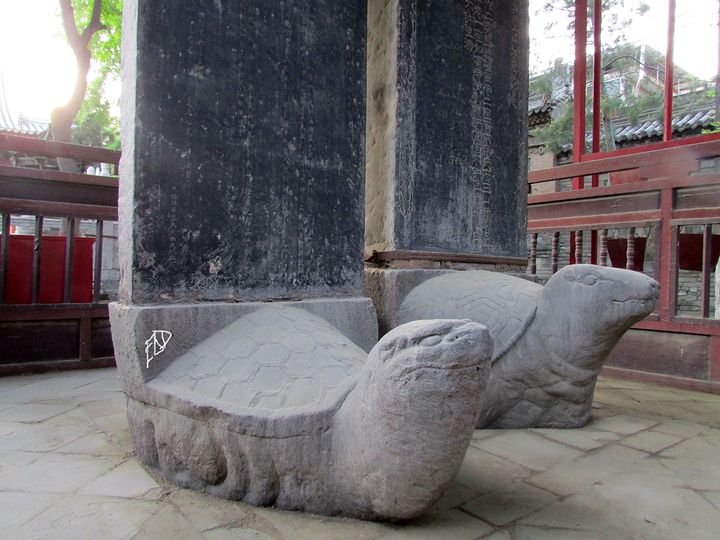
Wandering around the mosque, I noticed that domestic and foreign tourists alike found the Arabic and Chinese inscriptions on the arches, walls, and stelae just as captivating as the turquoise-roofed buildings themselves. Weeks later, when I returned to the Sultanate of Oman and showed my Omani students these photographs, they delighted in seeing the Arabic decorating the mosque too.
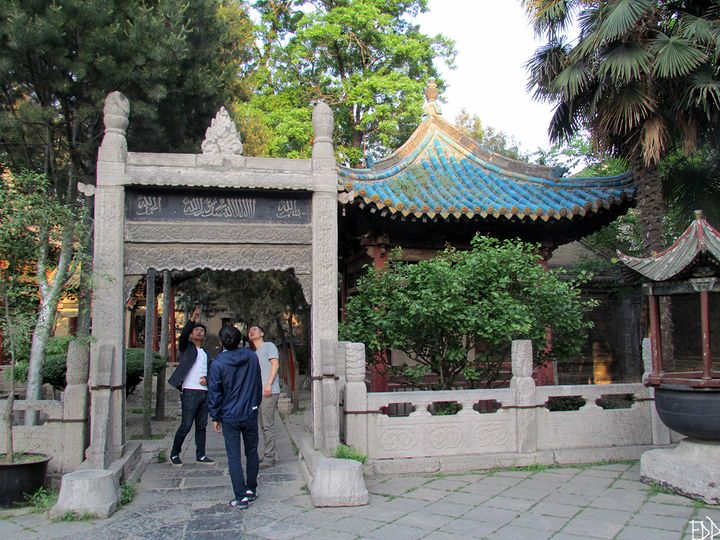
The third courtyard, which is considered the "Place of Meditation," features the mosque's tallest tower -- known as the Xing Xin Ting ("Pavilion for Introspection") or Sheng Xin Lou ("Tower of the Visiting Heart"). In many ways, this ten-meter-tall octagonal "Tower of the Visiting Heart" is the heart of the mosque complex itself. Constructed as a stout pagoda in traditional Chinese style and decorated with dragon heads, it functions as both a minaret and pavilion to watch the moon.
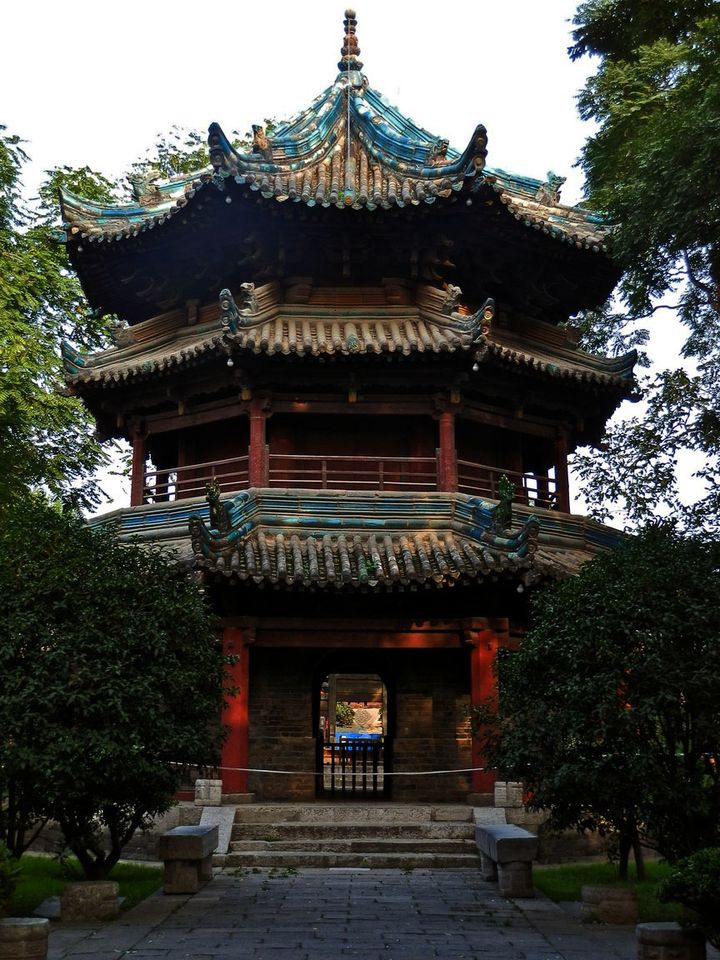
The fourth courtyard is home to the hexagonal "Phoenix Pavilion" which resembles a beautiful phoenix spreading its wings. I was lucky to see it illuminated by the setting sun. A plaque carved with a dragon can be found under the east cornice of this elegant Qing Dynasty structure.
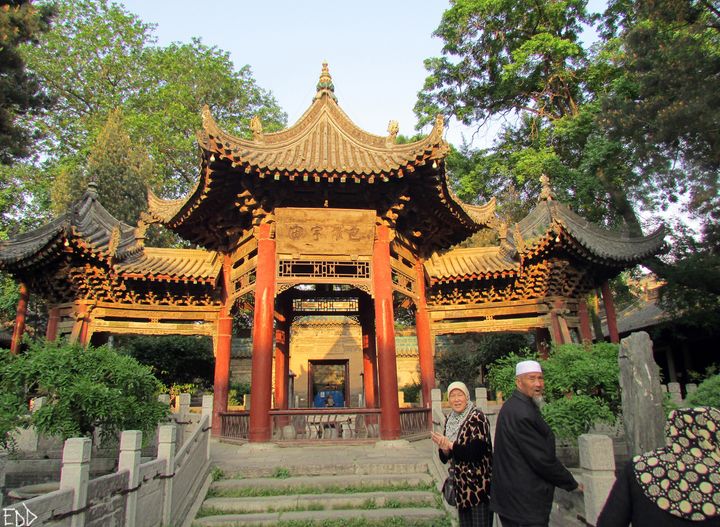
From afar the roof appears to be a strictly Chinese design, but an Islamic wooden cupola is actually hidden inside the central edifice. To the sides of this structure, there are halls filled with furniture, Arabic calligraphy, sculptures, lanterns, household goods, and even a sundial from the past -- all presented like artifacts in a museum.
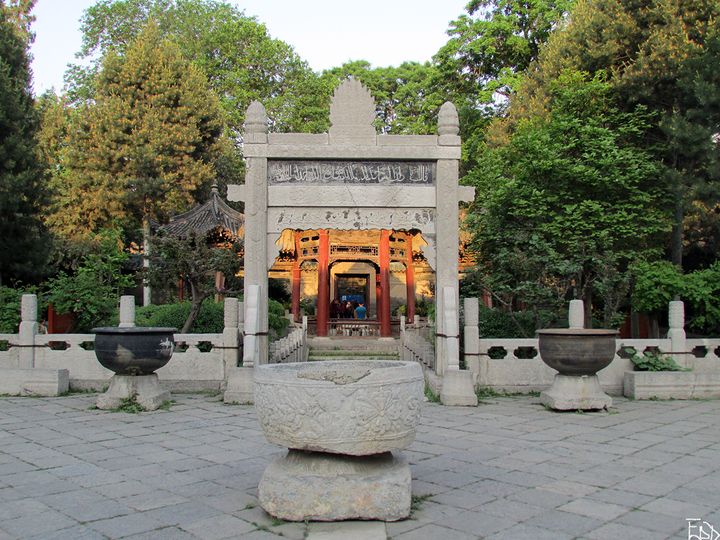
The phoenix pavilion leads to the large turquoise-roofed Prayer Hall which dates to the Ming dynasty and can accommodate thousands of worshippers. Signs leading up to the door describe the essential beliefs of Islam and its place in Chinese history. The Prayer Hall, decorated with Chinese plaques and hanging lanterns, occupies about 1,300 square metres.
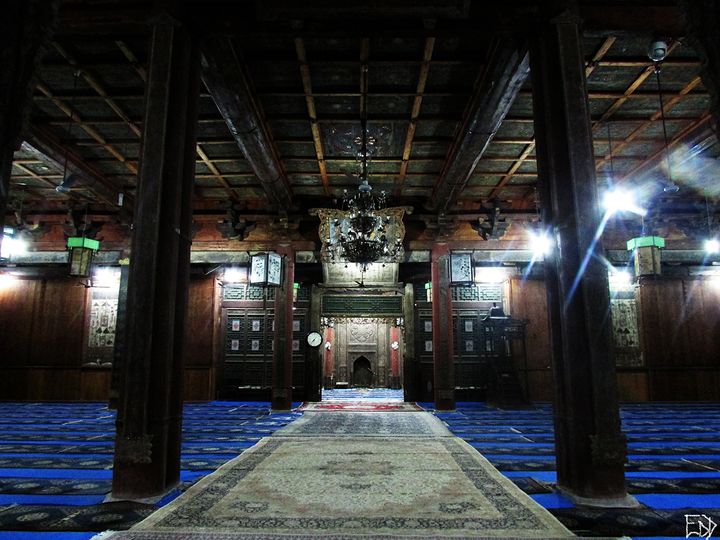
The interior of the mosque is magnificent -- with intricate patterns of flowers and Arabic calligraphy carved into the wood around the prayer niche. The dynamic fusion of architectural styles displayed throughout the mosque culminates in the entire Qur'an etched into the wooden walls of the prayer hall in both Arabic and Chinese. The Great Mosque of Xi'an is a unique treasure of Islamic spiritual and cultural heritage that serves as a welcome sanctuary of stillness and serenity in the bustling alleyways of a crowded and dynamic city.
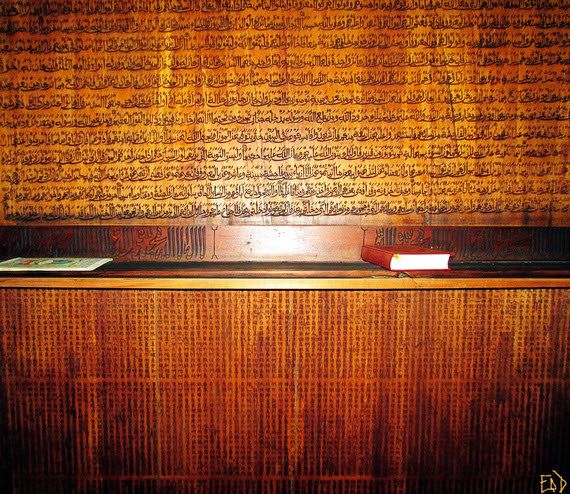
When I finally felt ready to re-enter the clamor of the bazaar after an afternoon of quiet contemplation, I asked one of the mosque custodians at the door where I might find some tai chi clothes nearby. I had become enamoured with tai chi while living in Lebanon -- but I couldn't find any proper tai chi clothes in Beirut. "Tai chi clothes?" the custodian said, "we have some in the mosque gift shop." To my surprise, he stepped behind the counter of the shop, and presented me with a perfect tai chi uniform that was just my size.
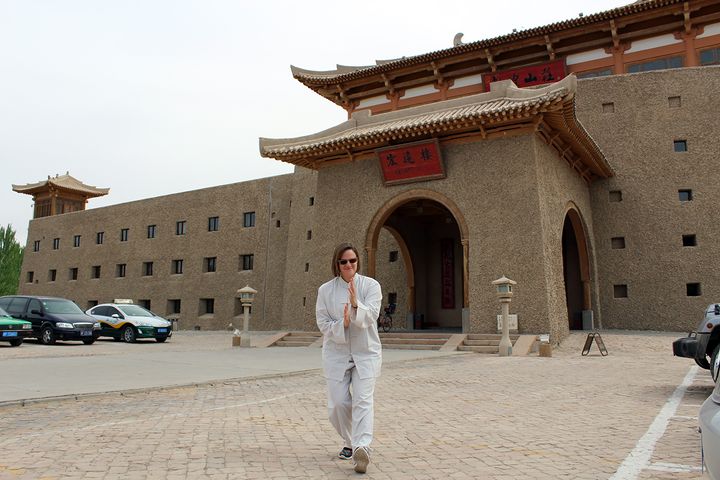
Exiting the Great Mosque of Xi'an, I was happy to be carrying my new tai chi uniform (to wear on the road to Xinjiang) along with peaceful memories of this special spiritual oasis -- as echoes of Chinese Sufi poetry whirled in the wind:
O You toward whom no one journeys but You,
neither mosque nor monastery is empty of You!
I saw all the seekers and everything sought --
all are You, with no one else in the midst.

